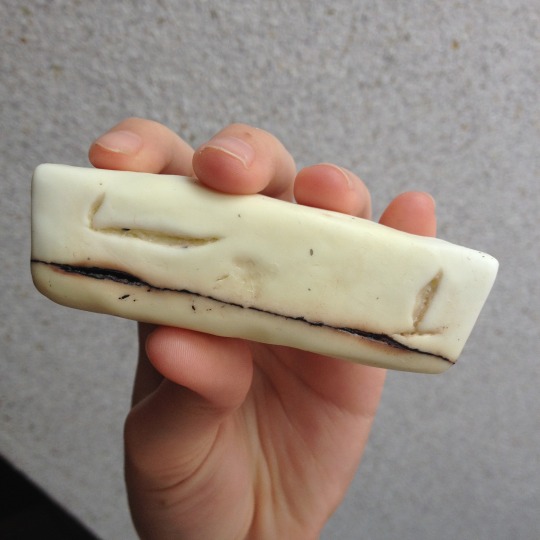Hello everybody. I made this levander soap (picture below) on January 29th. I gave one bar to my boyfriend and yesterday he told me that it starts to crack after he uses it and it dries. The recipe is:
H2O 190 grams
NaOH 69,48 grams
coconut oil 22% (110 g)
shea 15% (75 g)
olive oil 40% (200 g)
palm oil 23% (115 g)
I also added almost one teaspoon of sugar to increase bubbles, 16 grams of levander EO and one teaspoon of TD. The soap did not went through gel phase.
I use the same soap at my work and this never happened to me. By the way, my boyfriend's bathroom is not heated and it's cold there, which at first I thought may be the problem, but the thing is that any other soap that I made does not crack. Any thoughts?

H2O 190 grams
NaOH 69,48 grams
coconut oil 22% (110 g)
shea 15% (75 g)
olive oil 40% (200 g)
palm oil 23% (115 g)
I also added almost one teaspoon of sugar to increase bubbles, 16 grams of levander EO and one teaspoon of TD. The soap did not went through gel phase.
I use the same soap at my work and this never happened to me. By the way, my boyfriend's bathroom is not heated and it's cold there, which at first I thought may be the problem, but the thing is that any other soap that I made does not crack. Any thoughts?

















































